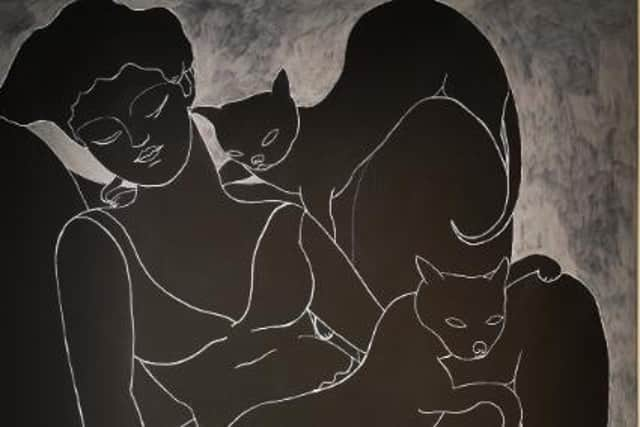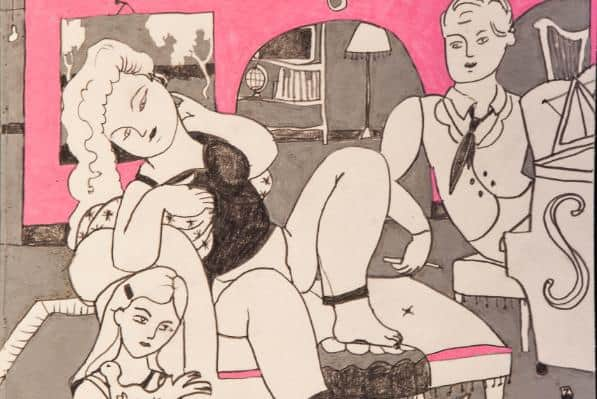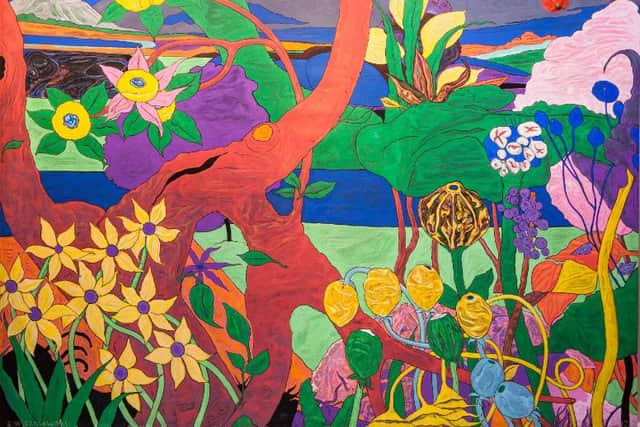Adrian Wiszniewski interview: "I'm interested in everything"


In December 2001, I was dispatched to Lochwinnoch to interview Adrian Wiszniewski. In a high profile announcement two years earlier, the artist, one of Scotland’s foremost painters, said he had decided to stop painting. Now – breaking news – he was painting again.
I’m pleased to report that Wiszniewski is still painting. His latest exhibition, Prudence Perched in Paris, opened at Glasgow’s Compass Gallery on 12 March, and can now be viewed on the gallery’s website. The artist, meanwhile, spoke to me from his home in Lochwinnoch, where he was waiting for a grocery delivery and being philosophical.
Advertisement
Hide Ad“Once we’ve got through it all, we’ll realise how to appreciate everything we’ve got,” he says. “We’re just so used to security. When it’s taken away, you realise how fragile the world really is. It’s intriguing.”


Of course, Wiszniewski would be intrigued by the current situation. I can’t think of anything he’s not intrigued by. His work draws on a wide range of interests, and our long, rambling conversation touches on
all kinds of things, from the tulip mania of the Dutch Golden Age to how small a space a giant octopus can fit through (answer: really quite small).
“When you get artist statements saying ‘I’m interested in blah blah blah’, it means they’re not interested in all these other things,” he says. “You become he or she who does that one thing. I’m not interested in digging one furrow. Everything is so connected. I’m interested in everything.”
The variety of work in the Compass Gallery show demonstrates that range of interests, and the way Wiszniewski moves fluidly between the symbolic, the philosophical and the poetic. “It can be a problem trying to make sense of my work. When it’s in a show, I hope it comes together to make a total character, a total attitude. I think of this show like an album: a couple of epic tracks, a couple of lesser pieces, then take one track and name the album after it – that’s what I did.


“There’s a picture, Rising Tide, a male and female sitting on a very small island, almost like a bath, and the tide’s coming up. It’s about the changing environment. It’s a very small picture, but sometimes scale is important that way, it’s about saying in small things we recognise the big changes in the world.”
Advertisement
Hide AdA series of works in black and white is a departure from the rich colours he often uses. “I was working at Glasgow Print Studio and Ken Currie was there doing some etching. He’s really good at using black and white, I was quite jealous of what he was doing. Then I discovered blackboard paint – you get this really beautiful black, and you can draw on it in white acrylic.”
Wiszniewski rose to fame almost immediately after graduating from Glasgow School of Art in 1983. Along with Currie, Peter Howson and Steven Campbell, he was one of the New Glasgow Boys, young, bold, inventive figurative painters who quickly became the toast of the art world.
Advertisement
Hide AdBy 1999, the year in which Wiszniewski announced his departure from painting, things were very different. Conceptual art had arrived. Paintings were struggling to sell and commissions were thin on the ground. For Wiszniewski, the icing on the cake seemed to be the Millennium Dome, a celebration of British achievement which included not a single painting.
Always prolific and hard-working, and by then a dad of three, he channelled his energies elsewhere: he designed rugs and furniture, worked in sculpture and printmaking, wrote three plays, a film script and a novel which was shortlisted for the Dundee International Book Prize.
I ask if it bothers him that the rooftop restaurant which he designed for Glasgow’s GoMA in 1996, and which has been called the most complete realisation of his vision, closed after just six years.
“Not really,” he says. “When it opened, people were queuing up to get in, so it had its time when it was really, really good. I’m more concerned about today and tomorrow than hanging on to something I did in the past.
“I think it happens quite a lot with artists: you throw things at a wall and sometimes they stick and sometimes they don’t. If you’re remembered for anything, it might be for a nursery rhyme you made up rather than your body of work. You don’t know what’s going to be left in the sand, if anything at all.
“Seven years ago, a book came out about my work. It was good to look back at things, but I wanted to move on from it. I thought: I can do better than that. I got more ambitious afterwards.”
Advertisement
Hide AdIn 2017, Wiszniewski got funding from Creative Scotland to paint landscapes in Scotland and New Zealand. “Two amazing countries, very similar in some ways: one really, really old, with some of the oldest rocks in the world, and New Zealand, still smelling of sulphur, very active, brand new. It was like going through the looking glass and arriving somewhere similar to where you came from, but also different.
“It’s also about the meaning of landscape, the financial, the political. You can’t look at landscape in Scotland without looking at Scottish history, who owns it, why things look the way they do.”
Advertisement
Hide AdHowever, the Compass Gallery show is a reminder that the core of his work is still the figure, and the signature Wiszniewski figure is young, languid, androgynous. In a world in which we are all much more aware of gender fluidity, they take on a fresh resonance.
“It’s something I’ve always been aware of. I was never very keen on the macho element, there was a lot of that about when I was at art school. It was all stereotype, I was much more fluid in my thinking.
“I did a picture quite a long time ago, Transexual Roof Party [featuring nude transgender figures], and it was amazing how some galleries wouldn’t hang it. I like to face these social fears, but I don’t want it to be the only drum that I beat. If you’re trying to say something is natural, why would you highlight it too much? Just incorporate it as normal within your work.”
Having the new show on the walls is a “staging post,” a chance to take stock, think about what’s coming next.
“Overall, I’ve enjoyed the variety of work I’ve been doing. I was always dead jealous of people like Picabia and Picasso who did great set design. I’d love to do a design for a ballet. It frustrates me a wee bit I’ve not been asked to do one. Why aren’t the big public institutions — Scottish Ballet, Scottish Opera — commissioning artists all the time? It would bring in a new audience.
“Not because I’m desperate for a job,” he adds, quickly, “just because it’s interesting.”
Adrian Wiszniewski: Prudence Perched in Paris is now available to view on the Compass Gallery website, see www.compassgallery.co.uk